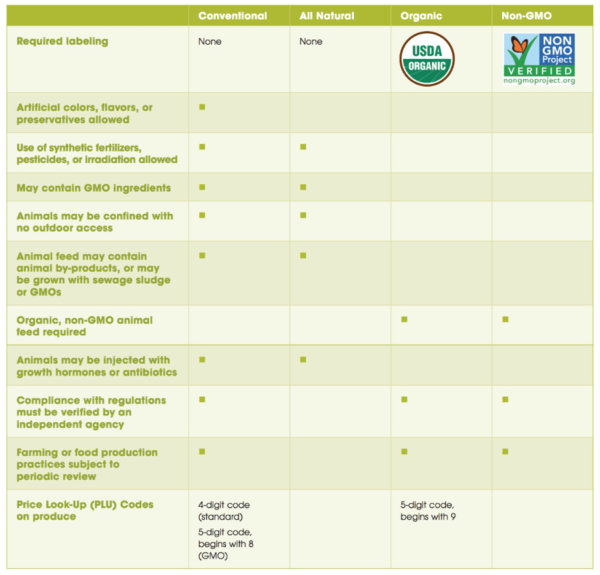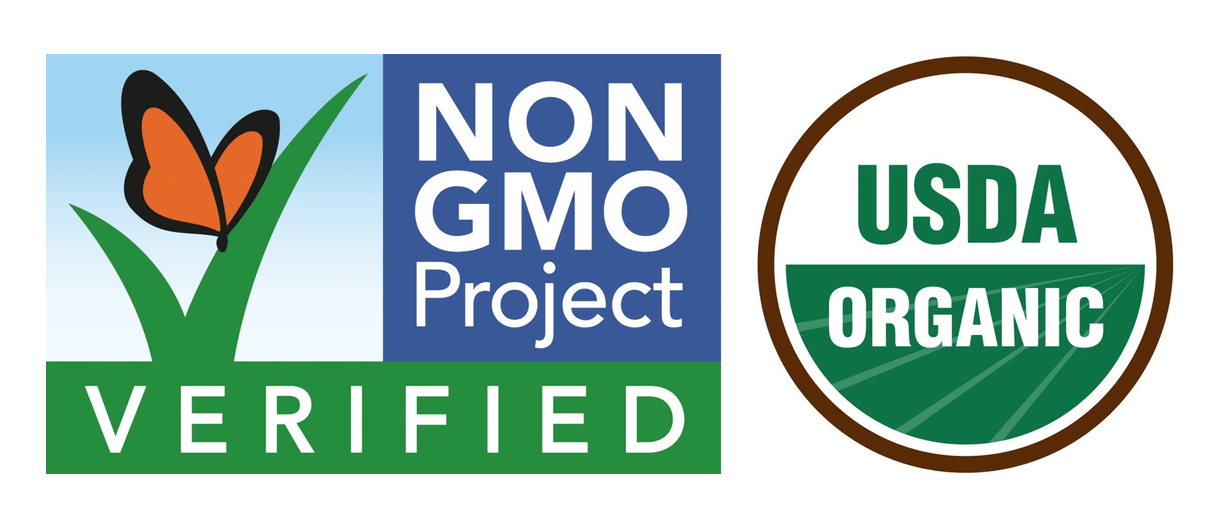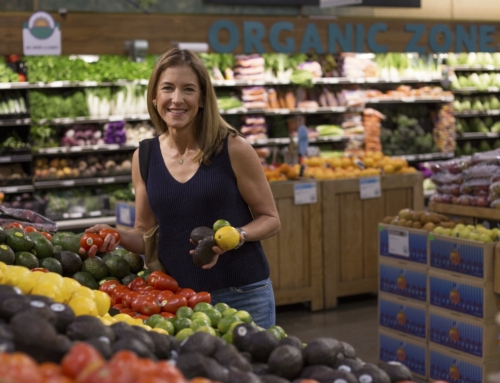By now you know that eating organically grown fruits and vegetables is better for your health—organic produce has higher nutritional value and antioxidant content than its conventional counterpart. But when shopping for healthy foods, it can become confusing to decipher the true story behind the different claims made about organic foods, GMOs, and pesticides.
Let’s break it all down….
Organics
In order for food to be certified “organic” by the USDA—and carry the official seal—the farms that grow the food must abstain from using genetic engineering, synthetic or man-made fertilizers, pesticides, herbicides, irradiation, sewage sludge, hormones, or antibiotics. In general, organic farms also must demonstrate they consistently work to protect natural resources and promote biodiversity as part of their operations.
“Conventional” produce includes anything that doesn’t meet the strict requirements for the USDA organic label. Conventional food growers may use the technologies and chemicals that organic farms cannot, which make conventional farming less expensive. As a result, conventional foods is often less expensive. And while these foods are cheaper in the short run, they can contain hormones, antibiotics, synthetic fertilizers, and pesticides—all of which are associated with costly health risks. Less nutrient-dense than their organic counterparts, studies show pesticides used in conventional produce have been linked to increased risk of cancer, nervous system disorders, and hormone disruption.
“All-Natural” Foods
When you find the “all-natural” label on produce and food products, it means they contain no artificial colors, flavors, sweeteners, preservatives, or other additives. That doesn’t mean that they are organic or non-GMO; ingredients in “all-natural” foods may be conventionally or organically farmed.
GMOs
A GMO is a plant, animal, or other organism whose genetic makeup has been modified by gene splicing, gene modification, or genetic engineering. The majority of genetic engineering done today is meant to resist herbicides (chemicals to kill weeds). Sadly, the heavy use of these chemicals have created herbicide-resistant “super weeds” and “super bugs,” which can only be killed with stronger poisons.
There’s really no way of knowing what effect GMOs will have on us—or on the earth. Most developed nations have banned or restricted the production and sale of GMOs in their food supplies. However, the U.S. and Canadian governments have approved GMOs based on scientific studies. Unfortunately, these studies are unreliable as they are often funded by the corporations that create GMOs and profit from their sale, presenting a conflict of interest.
My recommendation: Limit your consumption of GMO foods until enough unbiased evidence-based research supports their safety. Even as GMOs are not required to be labeled in the food supply, many companies do label their food products as “Non-GMO Project Verified.”
Pesticides
Chemicals meant to kill pests (including weeds, microbes, fungi, insects, and rodents), pesticides protect plants during the growing season, but pose potential health risks. For any pesticides to be effective, they must be biologically active—or toxic. Pesticides used in conventional farming are made from fossil fuels, and their chemical residue stays on the food, which is then sold as fresh produce, or fed to livestock that become the meat we eat. Organic farming utilizes pesticides made from natural substances which are shown to be less harmful to the environment.
In humans, prolonged exposure to pesticides is known or suspected to cause birth defects, toxicity to a fetus, benign or malignant tumors, genetic changes, blood disorders, nerve disorders, endocrine disruption, and reproductive challenges. Organic foods contain less pesticide residue.
My recommendation: Limit your exposure to pesticides by buying organic foods whenever possible. Washing your foods before eating or cooking can also help you reduce your exposure.
Organics & GMO Shopping Chart
This handy chart, from the Institute of Functional Medicine, breaks down the criteria for each food labeling designation.

Karen’s Corner

I recently hosted a super fun dinner event supporting the Environmental Working Group (EWG) with over 150 attendees. We raised almost $100,000! Thank you to all who supported EWG. Guests were served a healthy organic dinner and EWG gave away tote bags loaded with full-sized EWG Verified personal care products to every attendee! From what we drink, to what products we use, we are exposed to thousands of chemicals daily that have not been tested for safety. For free resources and to learn more about the great work of EWG, click here. I am so proud to serve as an EWG board member!
Resources
Lorenz ES. Potential Health Effects of Pesticides (Pesticide Education). Pesticide Education (Penn State Extension). http://extension.psu.edu/pests/ pesticide-education/applicators/fact-sheets/pesticide-safety/potential-health-effects-of-pesticides.
Organic and Conventionally Grown Food. National Pesticide Information Center. http://npic.orst.edu/health/ovc.html. Published October 16, 2015.
Organic Regulations. Agricultural Marketing Service. https://www.ams.usda.gov/rules-regulations/organic.






